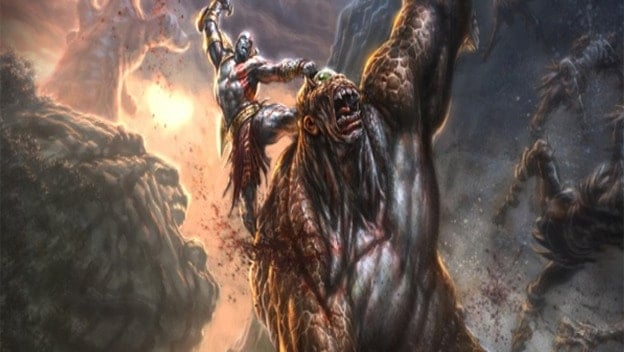Just a few weeks ago, I had the chance to play the first half hour or so of the upcoming God of War: Ascension. I also sat down with the Lead Designer on the project, Mark Simon, and we had a talk about what makes this particular entry in the series unique. (For more on that, check out my hands-on impressions .)
But on a tangentially related note, I’ve always had this feeling that God of War II’s visual design was at least partially influenced by the phenomenal ICO, and, since Simon had worked on God of War II, I finally got to ask the question to someone who could answer it. And yes, Simon kind of sort of confirmed that ICO was an influence.
That got us talking about the design elements of ICO, and how those informed some of the decisions made in the God of War games. See, the thing that ICO did really well was to guide players through its world using background visual elements. For example, you’ll see a tower way off in the background and say to yourself, “That looks cool. I want to go there.” And the game will eventually take you there. You, as the player, are being prepared for what’s to come by seeing glimpses of it in the distance.
Back in the God of War II era, Simon was working with the game’s cameras. He told me: “I was the lead camera guy on God of War II. I worked with Cory [Barlog]. And Cory always had that spire off in the distance, and that would always drive you towards that spire, and that was the thing you were working towards.”
So using background elements as visual cues to guide the player from landmark to landmark was a deliberate design decision made by the God of War team. Simon explained further, in regards to Ascension: “We’re going to see the epic-ness of what he [Kratos] needs to do, and it’s always going to be in front of you. It’s always going to be there. You’re always going to see it, and you’re going to be like, ‘Man, I’m getting closer, I’m getting a little bit closer, I’m getting a little bit closer.’ And when you finally get there, you’re going to have that moment like when you first reach the core on the inside of Pandora’s temple in God of War I, where you’re like, ‘Finally! I finally made it here! I don’t care if it’s a swimming pool with a plug at the bottom of it or not. This is cool. I finally made it here. I’ve been working the whole game to get here.’”
And that’s what makes earlier God of War titles, especially GoW2, interesting; they felt like odysseys of exploration. While God of War III sort of shied away from that to focus more on closing down the trilogy, Simon assured me that Ascension is going back to that grander, more epic sense of exploration and discovery.
This is all interesting to me, because it exploits one of the elements unique to video games as a storytelling medium. See, whereas a novel or film can keep readers/viewers hooked through good pacing and tension, video games are less able to do that, since the player is in control for such a major percentage of the time. It’s hard to control the element of pacing when, say, the player has the option to spend an hour just exploring a small room if he or she wants to.

So, to drive players toward the end of the game, there has to be something pulling them there. And the sorts of visual cues that Simon explained to me become an excellent way to accomplish that.
Of course, all of this is ancient history by this point. ICO is now almost twelve years old, and God of War II came out way back in 2007. But the idea of populating backgrounds with visual cues to guide the player is still very much relevant. In fact, one of last year’s most impressive games, Journey, was based almost entirely on this idea alone. In Journey, it was the mountain off in the background that served as the sole element that drove players toward the end of the game. It was ever-present, standing there majestically, taunting us to draw nearer and nearer to it.
That’s only one of the many ingenious ways game developers have attempted to guide players through games, and I’m sure there are several more breakthroughs in the future. Still, it’s fascinating to me, and all of this only reminds me why I love writing about a medium that is still very much evolving.
 | By Josh Wirtanen Editor / Social Media Date: February 19, 2013 |
